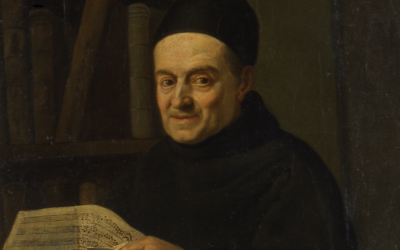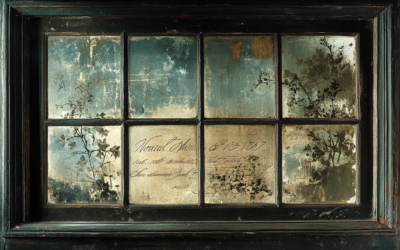A Critical Perspective
The Enigma of Mozart's Symphony in C Major, K.73
The Symphony in C Major K.73 has long puzzled Mozart scholars. Touted as a youthful work of prodigious talent, its origins are murky at best. The title “Symphony,” inscribed on the first page of the autograph, is devoid of the composer’s name, casting immediate doubt on its attribution to Wolfgang Amadeus Mozart. Was this truly his work, or is the Symphony yet another victim of overzealous attribution?
Mozart in Italy: The Untold Story
Was Mozart truly a solitary genius, or was he merely the instrument of his father’s ambition? “Mozart in Italy” challenges the conventional narrative, revealing a complex dynamic between father and son that shaped the course of music history. Prepare to question everything you thought you knew.
“History is not a matter of certainty but of critical inquiry. The truth lies not in the name on the manuscript but in the rigor of the questions we dare to ask.”
Mozart in Italy
A Symphony Without a Name
The manuscript, held at the Biblioteka Jagiellońska in Kraków, is devoid of direct evidence linking it to Mozart. Even more intriguingly, the Minuet from the Symphony appears to have been sketched earlier by Wolfgang on page 7r of the 19 Minuets for Orchestra K.103—another work with authenticity in question. Adding to the intrigue is a bass sketch of the first movement’s opening measures in Leopold Mozart’s hand, found among the canon studies K.73x. These connections muddy the waters further, as both K.103 and K.73x are viewed with skepticism by scholars.
The questions multiply: Could this Symphony have been composed by Leopold? Or perhaps by Padre Giovanni Battista Martini, Mozart’s mentor during his studies in Bologna? Could it even be the work of an entirely different composer, misattributed through a combination of historical mishap and wishful thinking?
The Mystery of Dating and Provenance
A date, “1769,” appears on the manuscript in an unknown hand, likely added by Johann Anton André, an early Mozart publisher. This date has been widely accepted, but without critical verification. As one scholar aptly noted, “born as mere hypotheses, these claims have been passed down hand to hand without any form of verification, eventually gaining undeserved authority as proven facts.”
Ludwig von Köchel originally dated the work to late 1769 in his first edition of the Mozart catalogue. However, Alfred Einstein in the third edition reassigned the Symphony to the summer of 1771 and gave it the number K.75a. Subsequent scholarship wavered between these dates, with Wolfgang Plath eventually endorsing the original 1769-1770 timeframe after examining the autograph. Yet, even Plath admitted his conclusions were subject to the limitations of the manuscript’s accessibility.
The location of the Symphony’s composition is equally ambiguous. Salzburg, Bologna, and even Vienna have been proposed, but no definitive evidence supports any of these claims.
A Web of Contradictions
Further complicating the matter is the connection to Leopold Mozart. His sketch of the bass line for the Symphony’s opening movement raises the possibility that he was not only involved but perhaps the primary composer. This hypothesis is bolstered by the fact that the sketch appears in the same manuscript as Wolfgang’s canonic studies, which were long (and erroneously) associated with his lessons under Padre Martini in Bologna.
The stylistic elements of K.73, while competent, lack the innovation typically associated with Wolfgang’s more established symphonic works. Some have argued that the Symphony reflects more of Leopold’s conservative compositional style than the burgeoning originality of his son.
Conclusion: The Symphony That Challenges Certainty
The Symphony in C Major K.73 stands as a testament to the challenges of Mozart scholarship. Its uncertain attribution, murky origins, and conflicting scholarly interpretations reveal the fragility of the Mozart myth. Whether penned by Wolfgang, Leopold, Martini, or another, this Symphony forces us to confront the complexities of eighteenth-century musical authorship and the perils of unquestioned assumptions.
“In the end, the Symphony in C Major K.73 reminds us that history is not a matter of certainty but of critical inquiry. The truth lies not in the name on the manuscript but in the rigor of the questions we dare to ask.”
You May Also Like
Debunking the Romantic Virtuoso Image
The image of Mozart as a Romantic-era virtuoso is a misleading anachronism, fuelled by 19th-century propaganda. Wolfgang was no transcendental pianist, but a product of an era where music was more galant than heroic.
The Visit to Verona
In Verona, young Wolfgang Mozart impressed the local nobility, but the reality behind the scenes reveals a carefully managed public image, where strategic networking and curated praise played key roles in shaping his growing reputation.
Mozart’s Training
The myth of Mozart’s genius is nothing more than a carefully crafted illusion, propped up by misplaced attributions and romanticised biographies. Behind his so-called brilliance lies the reality of his father’s dominating influence and a lack of formal education.
From London to Vienna
The Mozart family’s journey from London to Vienna was marked by illness, failed opportunities, and the relentless ambition of Leopold Mozart, revealing the pressures and challenges behind the facade of success.
The Ambiguous Legacy of Leopold Mozart
This post explores the multifaceted and often controversial life of Leopold Mozart, providing insight into the complexities and contradictions that defined his career and legacy.
Mozart’s Illusory Triumphs
The story of the young Mozart’s so-called triumphs at the courts of Europe is a tale riddled with embellishments, half-truths, and fabrications—many courtesy of Leopold Mozart himself and those who later sought to mythologize his son. One such example is the visit to Munich on 12 January 1762.







